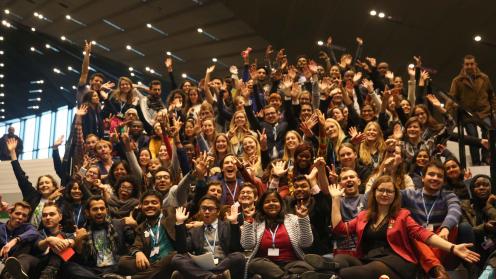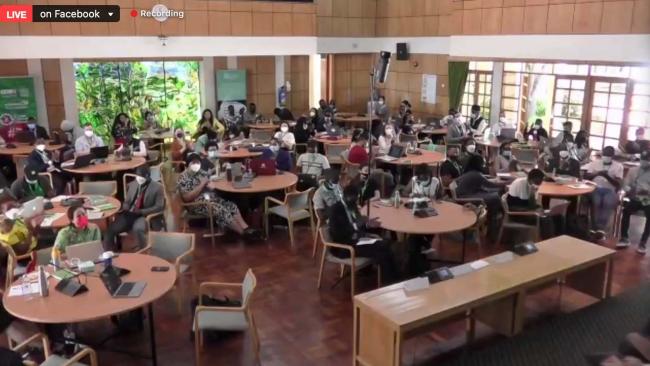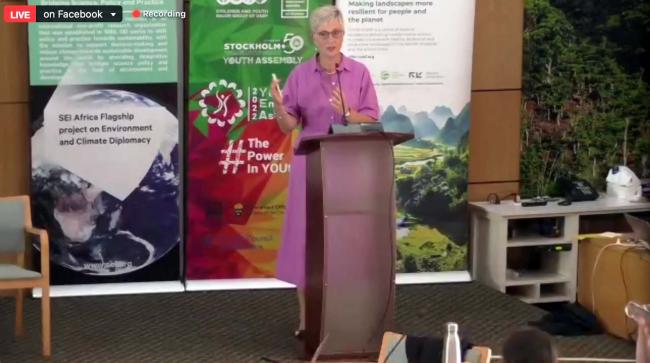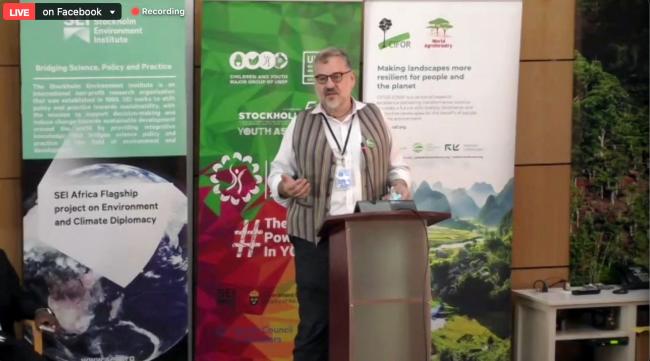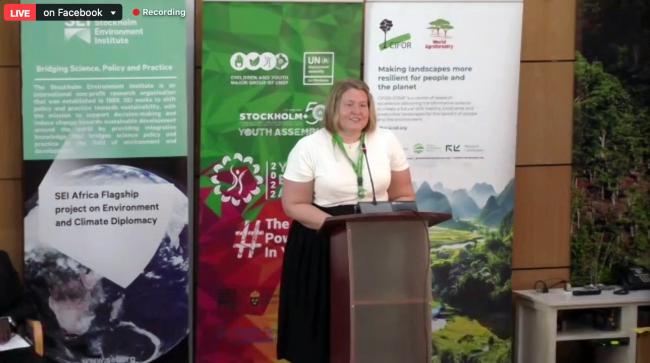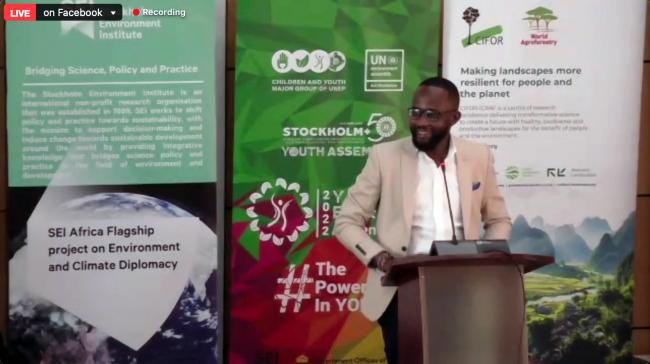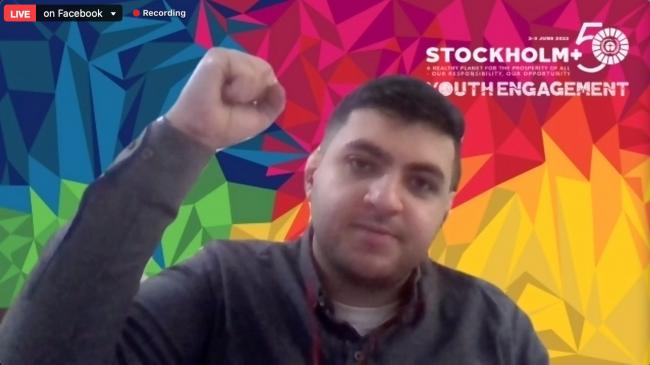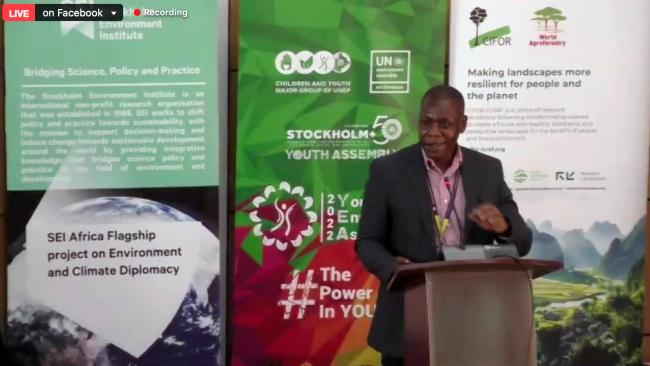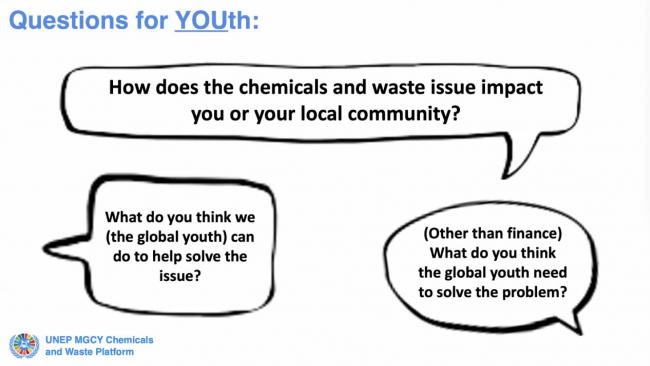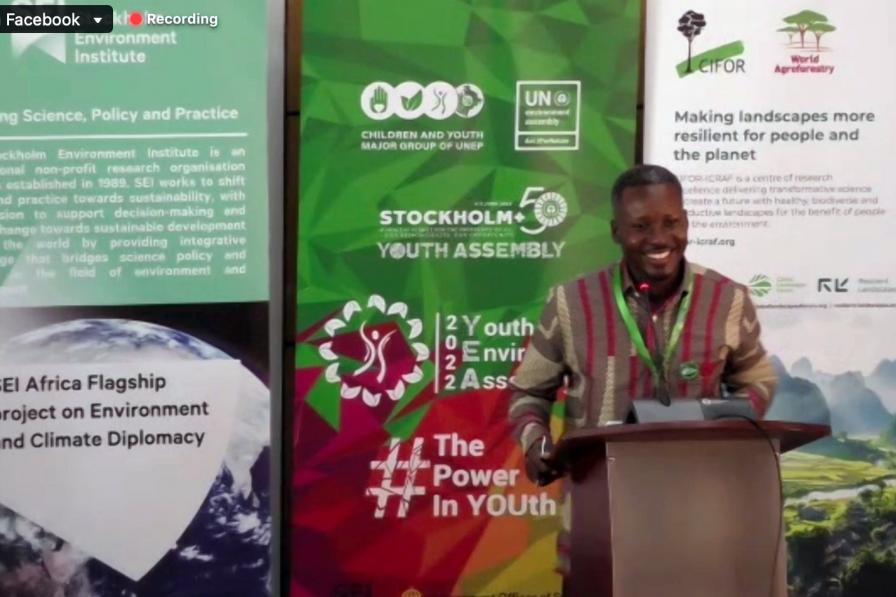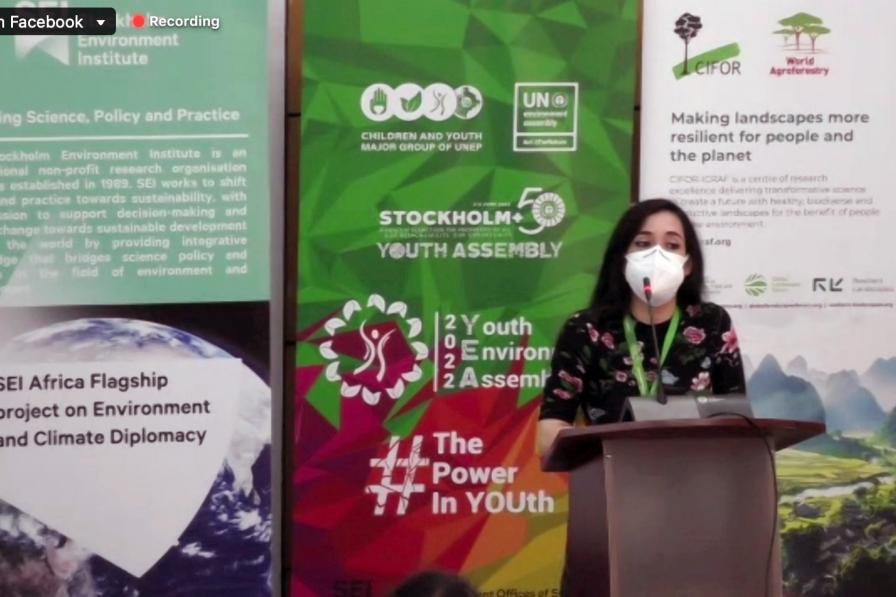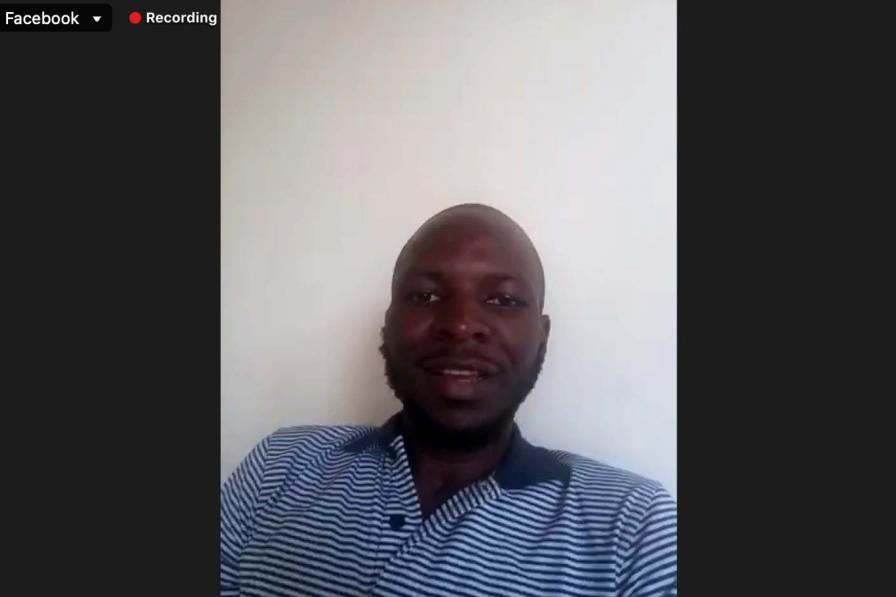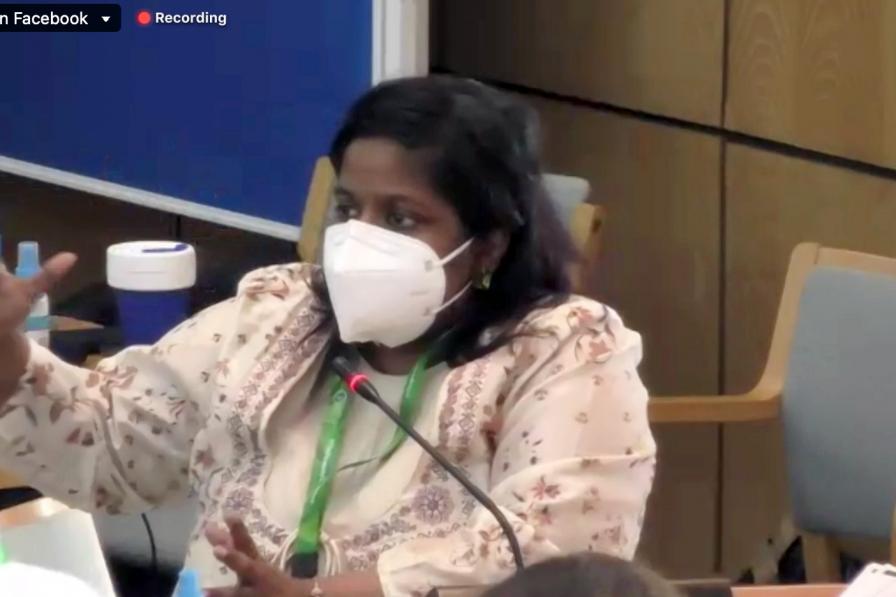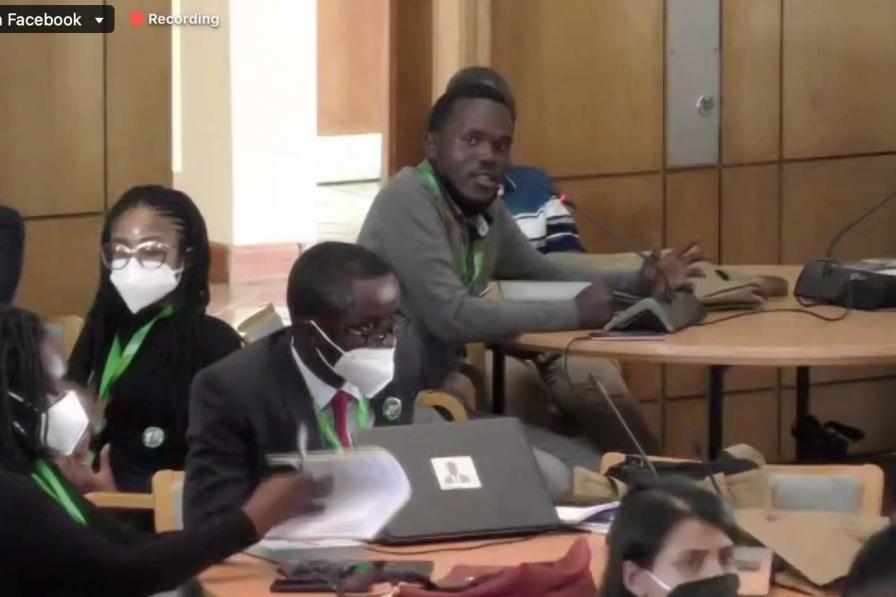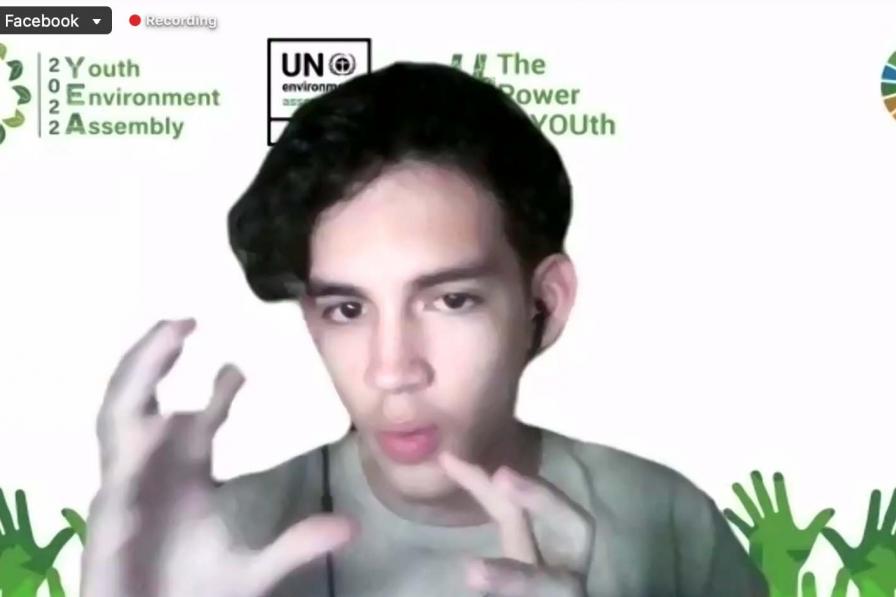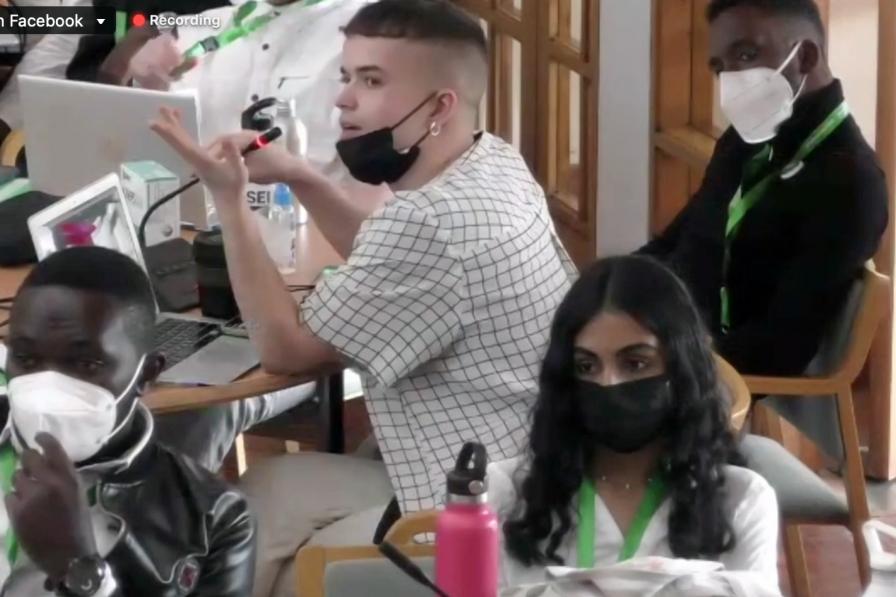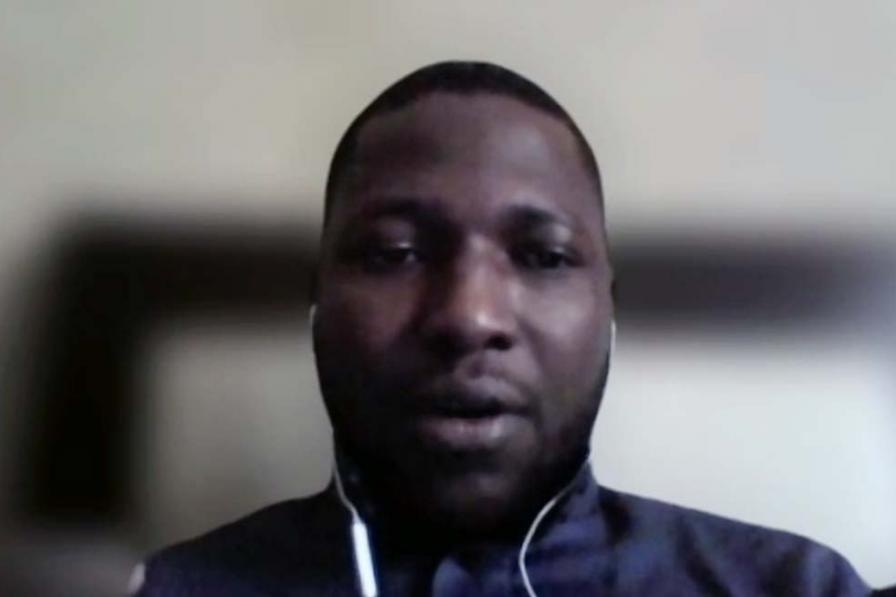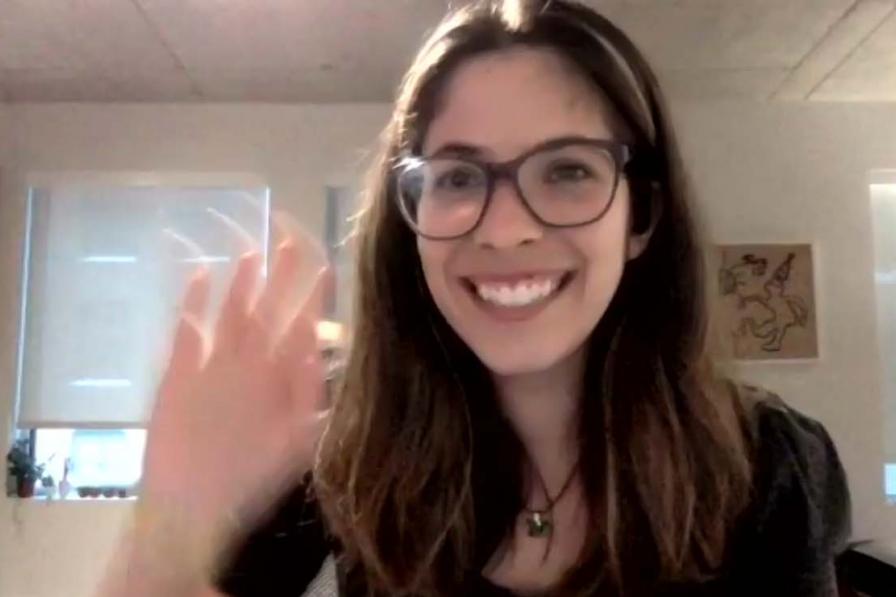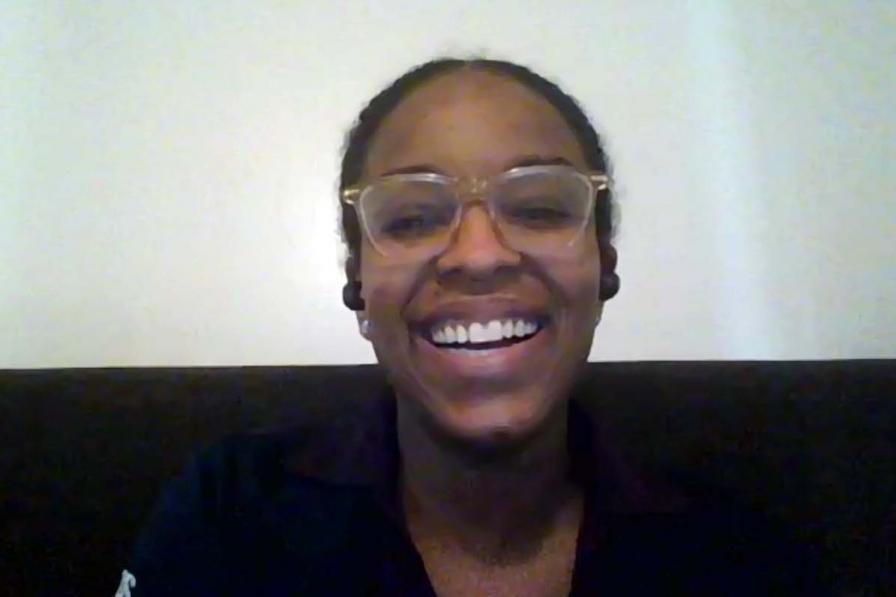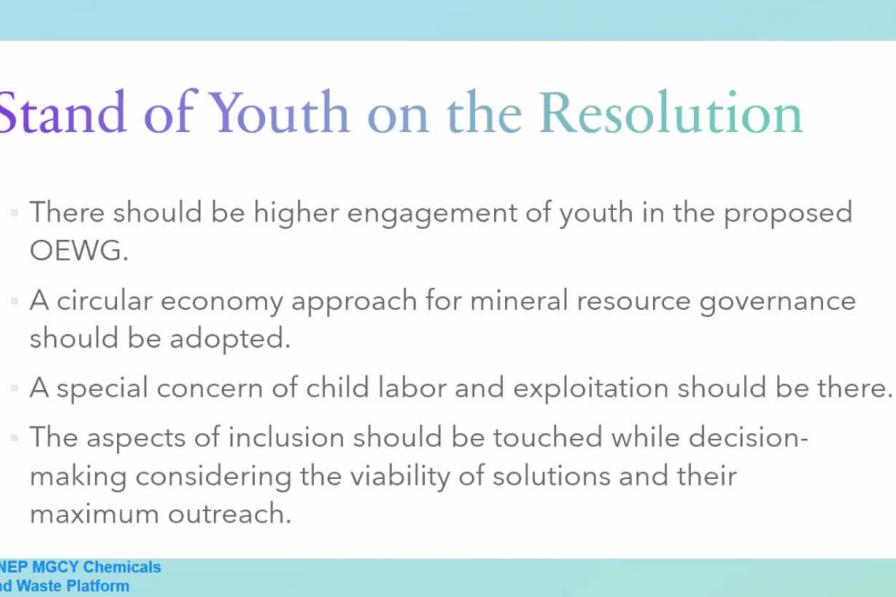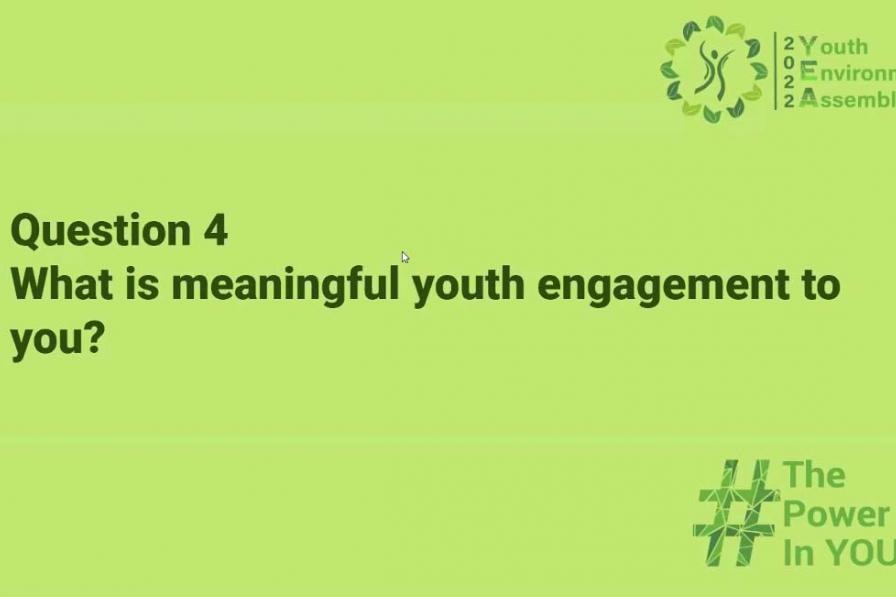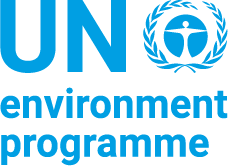The Youth Environment Assembly (YEA) 2022 convened for its first day on Saturday, 19 February 2022. Dalia Márquez, Major Group for Children and Youth, welcomed all to the opening session, emphasizing the theme, “The Power in YOUth.” John Aggrey, Major Group for Children and Youth, moderated remarks shared by intergenerational speakers for the opening session.
Raymond Ochieng, Secretary Youth Affairs, Kenya, recognized the YEA 2022 as a “convergence of changemakers.” Gunnar Andreas Holm, Ambassador of Norway to Kenya, reflected that collaborating with global youth constituencies for the resumed fifth session of the United Nations Environment Assembly (UNEA-5.2) has been impressive and inspiring.
Caroline Vicini, Swedish Ambassador to Kenya, looked forward to Stockholm+50 as an important event to further the transformation to sustainable societies, encouraging young people to continue to bring ideas and solutions.
Alponce Muia, youth representative, Kenya, applauded the participation of so many young people as a testament to their ability to realize aspirations made 50 years ago.
Tova Linqvist, Swedish Youth Council, clarified that the input of young people is crucial to influence stronger policy action commitments, saying that “we come with more than hope.”
Alexander Juras, Chief, Civil Society Unit, UN Environment Programme (UNEP), welcomed the audience on behalf of Inger Andersen, UNEP Executive Director, and reiterated that UNEP fully supports the active participation and engagement of youth in environmental fora.
Ingrid Rostad, Co-Chair, Major Groups Facilitation Committee, encouraged youth to continue to think outside the box and challenge the establishment to change prevailing policies.
Moses Mwenda, Kenyan Ministry of Foreign Affairs, highlighted that youth are important agents of change and the engagement of youth in policymaking and implementation is crucial.
Ahmed Ouda, Stockholm+50 Youth Task Force, Palestine, said youth need to demand a sustainable recovery from the COVID-19 pandemic.
Pamela Gitobu, Bamboo Association of Kenya, emphasized the potential of bamboo to replace plastics and make a significant positive change in everyday life.
Philip Osano, Director, Stockholm Environment Institute, African Centre, said the ‘ubuntu’ philosophy— “I am what I am because of who we all are”—is a philosophy that underlies multilateralism.
Participants then heard interventions from youth around the world. Key issues included: the importance of partnerships for sustainable mindsets; collaborating with other youth present at the YEA 2022, including on waste management; the role of technology; and partnerships for conservation, particularly at the grassroots level.
Ulf Björnholm, Acting Director, Governance Affairs, UNEP, then engaged with participants on the topic of the “triple helix,” which refers to the Open-Ended Committee of Permanent Representatives (OECPR), UNEA-5.2, and the upcoming Stockholm+50 meeting. Considering the focus for Stockholm+50 is to strengthen existing decisions and resolutions with accelerated implementation, he foresaw the outcomes of UNEA-5.2 as valuable inputs to move towards a larger impact in favor of the global environment.
In the ensuing discussion, youth participants raised issues related to, inter alia: opportunities for youth participation; mobilization and action during UNEA-5.2; the need for tools to measure global and local impacts of environmental action; and the availability of mechanisms to influence the negotiations.
During the breakout session, “Demystifying Chemicals and Waste at UNEA-5.2,” delegates heard presentations on current methods of chemicals and waste management, as well as relevant chemicals multilateral environmental agreements (MEAs). They also proposed decisions to be addressed at UNEA-5.2 related to chemicals and wastes.
Leselle Vincent, youth representative, outlined the four chemicals-related conventions—the Basel, Rotterdam, and Stockholm Conventions, as well as the Minamata Convention—and discussed the role of the Strategic Approach to International Chemicals Management (SAICM). She urged young people to be more involved in public consultations and support awareness raising activities. Lovish Raheja, youth representative, spoke on the chemicals and waste-related resolutions for UNEA-5.2, noting, among others, the call from the Major Group for Children and Youth to include a human-rights based approach in the resolution on the sound management of chemicals and wastes.
During the breakout session, “Standpoint on Sustainability: How to Effectively Expression Your Opinions,” Rifa Nanziba, YEA Working Group, invited reflections from participants on whether they agreed or disagreed with the statement: every stakeholder, even the local community and Indigenous peoples need to be involved in decision-making processes. Participants provided feedback, largely supporting engagement of communities whose lives are most affected by the outcomes of the decision. One perspective highlighted that while “everyone has a voice,” the effort to include every stakeholder in every decision could become cumbersome.
To receive free coverage of global environmental events delivered to your inbox, subscribe to the ENB Update newsletter.
